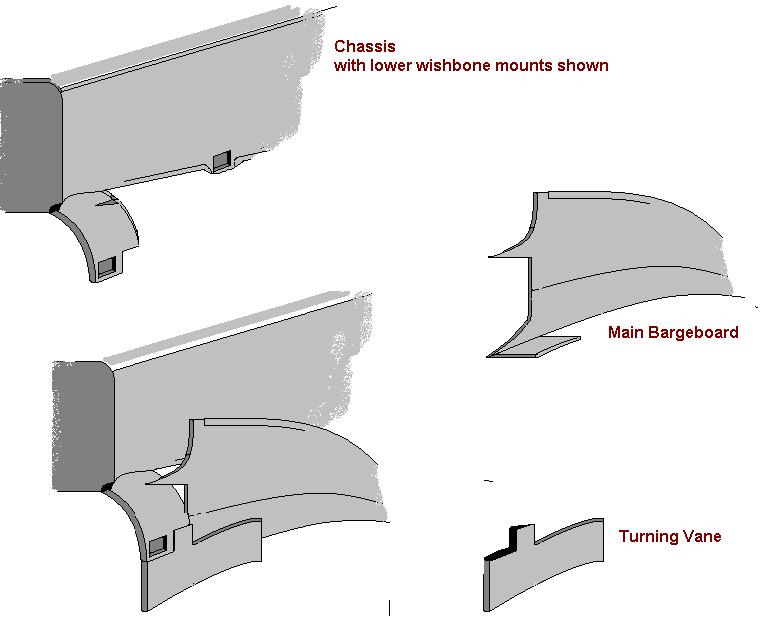Twin keels are more an aerodynamic solution that affects the chassis structure. As part of the front wing height changes a few years ago, teams ran into difficulties getting the front wing to produce enough downforce. As the centre section of the front wing is allowed to be lower, the team wanted to extract as much downforce from this section as possible. One problem was the wake from the wing was running into the chassis and the front lower suspension. Running a higher nose\chassis helped but the single central mounting of the lower wishbones was still an obstruction. Sauber pioneered twin keels (see below), where the single central mounting is split and the wishbones mount on two pick ups located at each corner of the chassis. Apart from creating shorter lower wishbones the suspension is otherwise unaltered. The twin keel design cleared up the area, but the downside was the chassis needed to be heavier for the same stiffness as a single keel layout, as this weight is quite low in the chassis this is not such a terrible situation.

McLaren, Jordan, Jaguar and Arrows (2002) all run variations of the twin keel, In 2002 McLaren and Arrows (nee Minardi PS04) use the keels as part of the bargeboard layout (see below), but McLaren have since simplified their set up for 2003. For 2004 most teams have found better ways of regaining the downforce lost in 2001 and will no no longer use the lower central section on the front wing, this puts the gains from twin keels in doubt.




